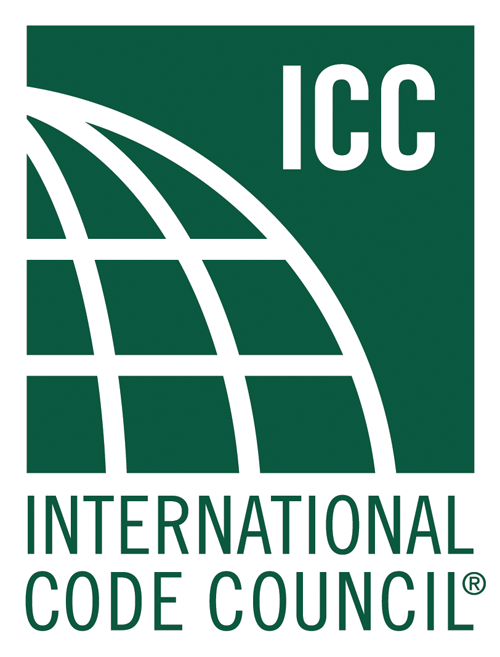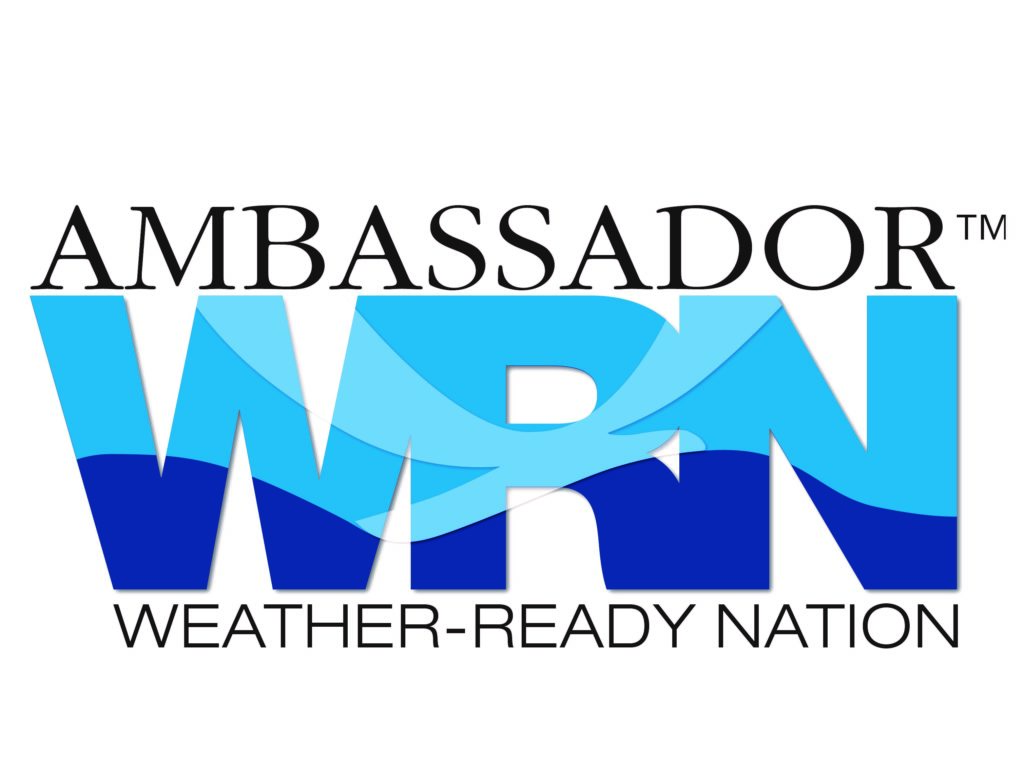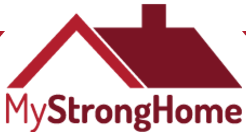After years of being battered by hurricanes, Alabama needed a new way forward to better withstand these punishing storms. Through the personal commitment of a group of individuals, the use of a proven construction standard, and a healthy dose of legislative resolve, the state is now well on its way toward creating a FORTIFIED future for its residents.
“If you’re in the construction industry, why would you not want to offer the option for your customers having a stronger home? It’s a no-brainer as far I’m concerned. For homeowners, the dollars are an investment, not an expense,” said Darius Grimes, president of Disaster Smart Consulting, Inc. and an IBHS-certified FORTIFIED evaluator.
It’s fair to say few people in Alabama had heard of the Insurance Institute for Business & Home Safety’s (IBHS) FORTIFIED for Safer Living® program when Hurricanes Ivan and Katrina caused $3 billion in widespread wind damage in 2004 and 2005. Today, the FORTIFIED new construction standard and IBHS’ retrofit program, FORTIFIED for Existing Homes™, are written into legislation as qualifying standards for the state’s wind pool and private carrier insurance mitigation credits.
The FORTIFIED requirements focus on strengthening the roof system, exterior wall systems, openings, and the home’s structural connections, all of which have shown to be the most vulnerable to damage in severe weather. The FORTIFIED for Safer Living systems approach for new homes and the required inspections ensure homeowners are getting the improvements they are paying for and that the work is being done correctly. FORTIFIED for Existing Homes provides opportunities for an overall assessment of a house and outlines the steps needed to incrementally improve its strength, making it a more cost effective option for people who are not building a new house.
Alabama’s adoption of the program is a good case study in how grassroots efforts, combined with legislative will, can significantly improve the quality of residential building stock in a state. Progress in Alabama is ongoing and there is still more to do, including adoption and enforcement of a statewide building code. However, Alabama’s example is one that other states could follow to make the kind of changes that will result in more resilient communities. Effective loss mitigation pays off in many ways; for example, according to studies by the Multi-Hazard Mitigation Council of the National Institute of Building Sciences, every $1 spent on property loss prevention projects saves society $4 in reduced future losses.
Mother Nature played a key role in making the case for using FORTIFIED building standards in Alabama. While only the counties of Baldwin and Mobile have direct coastal exposure, the entire state faces threats from high winds, hail, tornadoes, flooding and wildfire.
As disaster-related property damage mounted, Alabama legislators faced difficult decisions about how to encourage residents to take action to protect their homes and reduce losses. Senator Ben Brooks (R-Mobile) was among the lawmakers who began looking at other state reforms in Florida, Louisiana, Mississippi, South Carolina and Virginia. While this discussion was taking shape, other actions were underway to study the benefits of FORTIFIED and to encourage its use.
In 2008, the Alabama Insurance Underwriting Association (AIUA) began offering insurance discounts for homes in Baldwin and Mobile counties that meet the IBHS FORTIFIED for Safer Living standard. The same year, the first real-world test of the standard took place in neighboring Texas. When Hurricane Ike’s eye wall hit the Bolivar Peninsula, a group of 10 FORTIFIED homes survived, while the virtually all of the other 300 homes in the community were severely damaged or completely swept away. Almost immediately, more people were paying attention to this then little-known program and its superior construction standards.
“The AIUA fully embraced the FORTIFIED standards and saw the importance of trying to improve the building stock,” said AIUA Manager Bob Groves.
A year later, momentum surrounding FORTIFIED in Alabama intensified. The Alabama legislature passed a bill, which was signed into law, requiring insurers doing business in the state to provide discounts for coastal one- and two-family houses and manufactured houses that are built, rebuilt or retrofitted in accordance with specific standards, including FORTIFIED, to better withstand hurricanes and other catastrophic windstorm events.
“The standards in the FORTIFIED for Safer Living program are an integral part of the bill. We believe the statute is a very significant piece of legislation and we are proud of it,” said Sen. Brooks, who was the bill’s primary sponsor. “The bill is a vital part of the overall reform package we are pursuing.”
Beyond the capital, grassroots efforts surrounding FORTIFIED also were underway. The initiative was pushed forward by Carl Schneider, a prominent independent insurance agent in the Mobile area. Using his own financial resources and a grant from the Mississippi-Alabama Sea Grant Consortium, Schneider co-founded Smart Home Alabama in 2009. The organization is focused on educating individual homeowners and entire communities about vulnerability, resiliency, and sustainability, as well as facilitating conversations and collaboration through a variety of partnerships. Smart Home Alabama is modeled after other successful programs such as South Carolina SAFE HOME and Rebuild Northwest Florida, both of which have retrofitted thousands of homes for increased disaster resistance.
“We quickly saw that the vision Carl Schneider had for Smart Home Alabama had the potential to assist coastal states, counties and municipalities with identifying best practices for mitigating risks in the face of future storms,” said Dr. Tracie Sempier, Mississippi-Alabama Sea Grant’s coastal storms outreach coordinator. “The key to the success of Smart Home has been the partnerships formed among the organizations with similar goals and objectives working toward a common purpose of safer, sustainable, and affordable options for coastal residents.”
Today, Smart Home Alabama has secured additional partners, including the Coastal Alabama Leadership Council. Smart Home Alabama is now receiving numerous requests for information from builders, building code departments, engineers, homeowners, and the media. A grant from State Farm Fire and Casualty Company is helping to support their efforts, including paying for the retrofitting of several homes to the FORTIFIED for Existing Homes standard.
“The partnerships from the state level to the local level are what make Alabama a real model for the nation,” said Steve Simkins, State Farm’s counsel for Alabama and Mississippi. “We are all working together very hard to help homeowners understand there are things they can do to improve the sustainability of their homes.”
The grassroots efforts also have been bolstered by the “Roadmap to Resilience” report issued in 2010 by the Coastal Recovery Commission (CRC) of Alabama, which was charged with making recommendations for ways in which Alabama can harden its coastal property against future threats. The report called for homeowners to strengthen their homes and for governments to adopt stronger standards for construction, among other things.
“The FORTIFIED concept makes sense because it is a holistic system and performance-based standard,” Schneider said. “FORTIFIED is the best solution we have – FORTIFIED is our ‘Roadmap to Resilience.’”
The key to gaining more widespread support for FORTIFIED construction has been the fact it can be an affordable option and that, in areas vulnerable to major natural disasters, the risk of property loss outweighs the marginal additional costs.
“Mitigation isn’t just for high value properties,” said Dave Treutel, Jr., chairman of Smart Home Alabama, and president and chief executive officer of Treutel Insurance Agency. “You can mitigate homes in the $60,000 to $100,000 range. The only solution to living and effectively insuring property in catastrophe-prone areas is to implement safer, stronger standards – and that is the FORTIFIED program. It’s imperative.”
The diversity of the groups supporting the FORTIFIED standards is also helping to spread the message in a tough economy. Builders are discovering that more people are seeking stronger, better built homes and see the value of utilizing the FORTIFIED program as a competitive advantage to differentiate themselves from “average builders,” said Dwayne Smith, a structural engineer with Waverly Custom Homes, which has four FORTIFIED for Safer Living homes in progress.
“As with anything, competition is the best controller of cost,” said Smith, who now serves on the Smart Home Board of Directors. “The goals are to ensure your home is still there after a hurricane, help on insurance costs and keep more insurance carriers in the area.” Smith said the cost differential for building to the FORTIFIED for Safer Living standard can be as little as two percent of construction costs.
Comparing the shift to the FORTIFIED for Safer Living and FORTIFIED for Existing Homes standards with the shift from typewriters to computers, Smith says, “Twenty years from today FORTIFIED will be the standard. We’re trying to help people get there.”
The affordability message was reinforced through construction of a series of FORTIFIED Habitat for Humanity homes in Mobile. The efforts were financed in part through grants from Safeco Insurance and the Travelers Foundation.
“We know homes built to meet these stringent standards are better able to withstand severe weather, and we want to encourage and raise awareness of these smarter building practices,” said Eric M. Nelson, vice president of personal insurance at Travelers and a member of the IBHS Board of Directors.
By working with Habitat, insurers are providing peace of mind to low-income families, who often are among those who are least able to recover after a disaster.
“The FORTIFIED for Safer Living program helps by providing families with a stronger, safer home. The minimal upfront investment will definitely pay off in the long-term,” said Alex Cary, Habitat’s construction manager in Baldwin County. “If Habitat for Humanity can build FORTIFIED at an affordable housing level, then other builders and homeowners should certainly be able to as well.”
This is exactly what the Coastal Recovery Commission had in mind, said Commission Chairman Ricky Mathews, publisher of The Mobile Press-Register. “Bring smart people together and they’ll find a solution. The solution is a multi-faceted process bringing together leaders like builders, realtors, bankers, legislators, and homeowners,” he said. “There is no solution that doesn’t involve the insurance industry. Anything we can do to reduce risk can only be a good thing. We have to pass building codes which are much more stringent.”
The next steps in Alabama’s march toward truly resilient communities involves additional legislation and geting more builders and homeowners to recognize the value of building and retrofitting to the FORTIFIED standards.
A new law passed in 2011, allows Alabama homeowners statewide to qualify for a $3,000 state income tax deduction if they retrofit or upgrade their homes to resist damages associated with hurricanes, floods, tornadoes or windstorms.
Another bill currently pending in the Alabama Legislature would, if enacted, enable homeowners to establish a catastrophe savings account to cover insurance deductibles and other portions of uninsured losses for homes damaged by a catastrophic windstorm. Taxpayers could claim a credit against their state income tax for deposits made into the account.
Proving the value of stronger construction will be aided by the work being done at the IBHS Research Center in South Carolina. A windstorm demonstration conducted in fall 2010 pitted a conventionally constructed house against a FORTIFIED home. Dramatic video footage of the conventional home completely collapsing after being battered by high winds with gusts up to 96 mph, while the FORTIFIED home remained standing with relatively minor damage, has helped vividly illustrate the FORTIFIED message. The video has helped buttressed Schneider’s pitch to sometimes skeptical audiences.
“Which house do you want to own? Which house do you want to build, or be in during a storm?” he asks his audiences as they view the video footage. When he explains the cost difference was about 2 percent to 4 percent of the total hard costs to build the test home, many in the audience become believers. Next on Schneider’s list of partnerships are Realtors, appraisers and bankers, whom he hopes to convince of the benefits of using Smart Home Alabama and the FORTIFIED program to impact the re-sale value of homes. It’s a message many insurers already embrace.
“PURE has long been a believer in mitigation. A visit to the IBHS Research Center only strengthened our views. The marginal cost of building a home to the FORTIFIED standards reinforces our belief that quality can cost less,” said Ross Buchmueller, president and chief executive officer of Privilege Underwriters Reciprocal Exchange (PURE).
While there is clear and convincing evidence regarding the value of FORTIFIED, it will still take a concerted effort at all levels to continue moving Alabama toward widespread adoption of building and retrofitting to the FORTIFIED standards. Luckily, there are plenty of advocates who are up to the task.
“If you’re in the construction industry, why would you not want to offer the option for your customers having a stronger home? It’s a no-brainer as far I’m concerned. For homeowners, the dollars are an investment, not an expense,” said Darius Grimes, president of Disaster Smart Consulting, Inc. and an IBHS-certified FORTIFIED evaluator.
For additional information about IBHS’ FORTIFIED programs, visit www.DisasterSafety.org.








